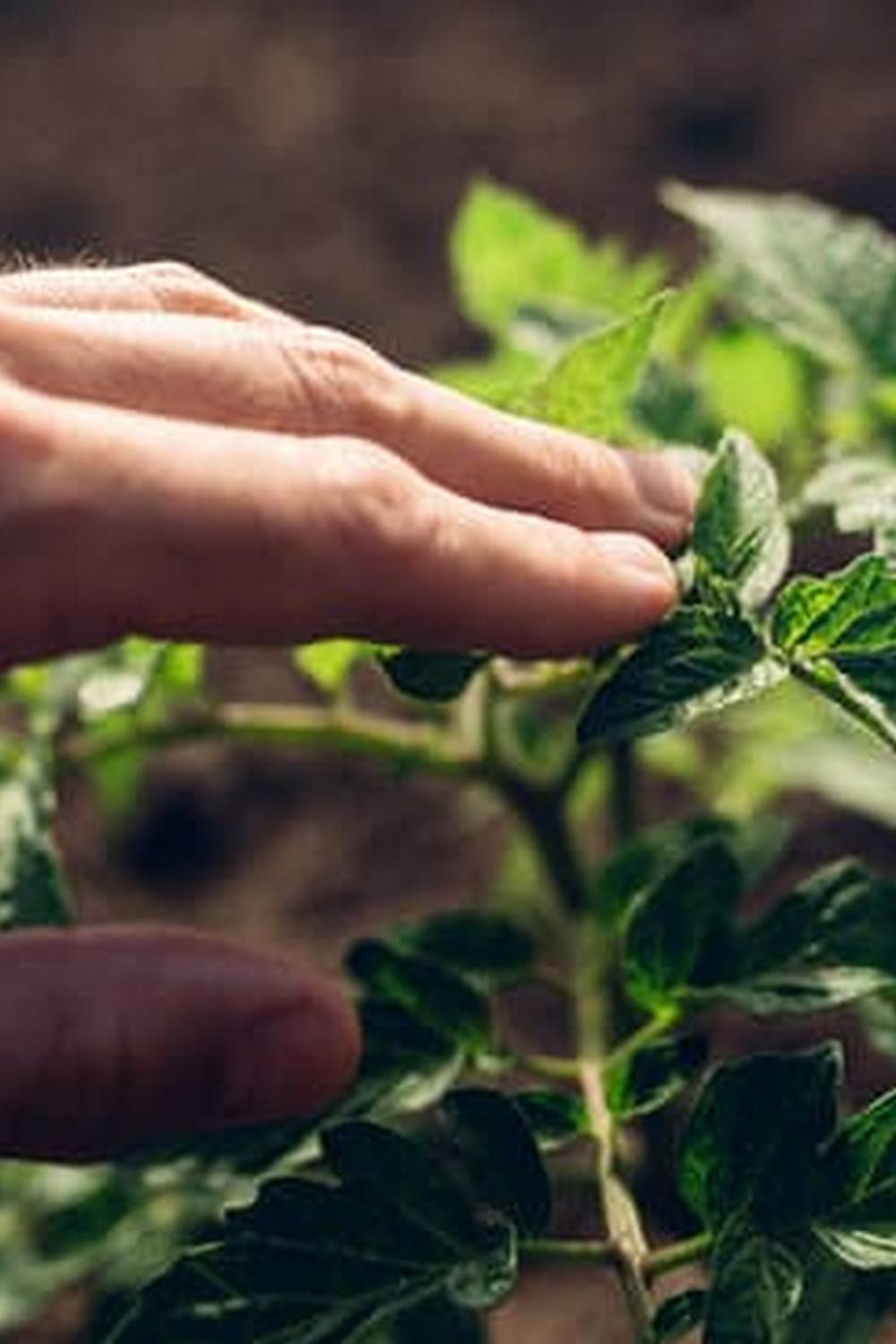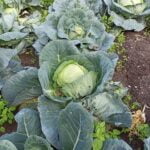Combining flower and vegetable gardens offers a multitude of benefits for both the plants and the gardener. This practice not only enhances the beauty and diversity of the garden but also promotes a healthier, more sustainable ecosystem. By integrating flowers and vegetables, gardeners can maximize limited space, improve soil health, and even deter pests naturally.
When planning a combined garden, careful consideration must be given to design and layout to ensure optimal growth and aesthetic appeal. With the right selection of plants, a harmonious and productive garden can be created. Companion planting is an essential aspect of this approach, as it enhances growth and repels pests by strategically pairing compatible species.
In this article, we will explore the various advantages of combining flower and vegetable gardens and provide practical tips for designing, selecting plants, preparing soil, watering, harvesting, and overcoming common challenges. Whether you are a seasoned gardener or just starting out, creating a combined garden can offer an enriching experience with rewarding results.
Planning Your Combined Garden
When it comes to planning a combined flower and vegetable garden, careful design and layout are crucial to its success. By integrating flowers and vegetables in a harmonious way, you can create a visually appealing and productive garden that maximizes space and resources. Here are some tips for designing and organizing a combined garden for optimal growth and aesthetic appeal.
Consider Plant Heights and Spacing
One of the key aspects of planning a combined garden is to consider the heights and spacing of different plants. Taller vegetables or flowers should be placed at the back or center of the garden bed, while shorter ones can be arranged in front. This not only creates an attractive layered look but also ensures that each plant receives adequate sunlight and air circulation.
Utilize Vertical Space
Incorporating trellises, arches, or vertical gardening techniques can help maximize space in a combined garden. Vining vegetables such as tomatoes, cucumbers, or beans can be trained to grow upwards, allowing you to make the most of limited space while creating an interesting visual element in the garden.
Group Plants by Watering Needs
When planning the layout of your combined garden, take into account the watering needs of different plants. Group together those with similar water requirements to streamline irrigation and prevent overwatering or underwatering certain plants. This can also help conserve water by targeting specific areas within the garden based on plant needs.
By carefully considering these design elements when planning your combined flower and vegetable garden, you can create a beautiful and functional outdoor space that provides both aesthetic enjoyment and bountiful harvests throughout the growing season.
Choosing the Right Plants
When it comes to creating a combined flower and vegetable garden, choosing the right plants is crucial for the success of your garden. By strategically selecting flowers and vegetables that thrive together, you can ensure a harmonious and productive garden that benefits both the plants and the gardener. Here are some tips on choosing the right plants for your combined garden:
1. Consider plant height: When selecting plants for your combined garden, consider the height of each plant to avoid overshadowing or overcrowding. Taller vegetables like tomatoes or corn can be paired with taller flowers such as sunflowers or hollyhocks, while shorter vegetables like peppers or lettuce can be complemented by low-growing flowers like marigolds or petunias.
2. Choose complementary colors: Incorporating a variety of colors in your combined garden not only adds visual appeal but also serves practical purposes. For example, planting red or purple flowering plants near green leafy vegetables can create a striking contrast and help deter pests.
3. Pay attention to watering and sunlight needs: It’s important to select plants with similar water and sunlight requirements to ensure they thrive together in the same garden space. For instance, pairing drought-tolerant flowers like lavender with vegetables that also prefer well-drained soil such as carrots or beets can result in a successful combination.
By carefully considering these factors when choosing plants for your combined flower and vegetable garden, you can create a vibrant and bountiful garden that benefits from the symbiotic relationship between flowers and vegetables, while providing an aesthetically pleasing environment for you to enjoy.
Companion Planting
One of the key benefits of companion planting in combined flower and vegetable gardens is its ability to create a more balanced ecosystem within the garden. By diversifying the types of plants grown together, gardeners can reduce the risk of pest infestations and diseases that often affect monoculture plantings. This natural pest control method not only supports healthier plants but also reduces the need for chemical pesticides, creating a safer and more sustainable gardening environment.
When selecting which plants to grow together in a combined garden, it’s important to consider their compatibility in terms of sunlight, water requirements, and growth habits. Some pairings may benefit from their shared characteristics, such as tall flowers providing shade for sun-sensitive vegetables or deep-rooted vegetables helping to break up compacted soil for shallow-rooted flowers.
| Companion Plants | Benefits |
|---|---|
| Basil with tomatoes | Repels pests such as aphids and hornworms; enhances tomato flavor |
| Marigolds with cucumbers | Deters nematodes; attracts pollinators |
| Nasturtiums with squash | Repels squash bugs; edible flowers add visual interest |
Soil Preparation and Maintenance
When it comes to creating a successful combined flower and vegetable garden, one of the most crucial aspects to consider is the soil. Both flowers and vegetables have specific soil needs, so preparing and maintaining the soil properly is essential for the health and growth of the plants.
Here are some essential tips for soil preparation and maintenance in a combined flower and vegetable garden:
1. Soil Testing: Before planting, it’s important to test the soil to determine its pH levels and nutrient content. This will help you understand what adjustments need to be made to create an optimal growing environment for both flowers and vegetables.
2. Amending the Soil: Based on the results of your soil test, you may need to amend the soil by adding organic matter such as compost or well-rotted manure. This will help improve the texture, fertility, and overall quality of the soil.
3. Mulching: Applying a layer of organic mulch around both flower and vegetable plants can help conserve moisture, suppress weeds, and regulate soil temperature. Mulching also adds nutrients to the soil as it breaks down over time.
4. Crop Rotation: Implementing a crop rotation plan can help maintain soil health by preventing depletion of specific nutrients from continuous planting of the same types of plants. Rotate your crops annually to ensure a balanced distribution of nutrients in the soil.
By following these tips for soil preparation and maintenance, you can create an ideal growing environment for a combined flower and vegetable garden, ensuring that both types of plants thrive harmoniously while maximizing yield and aesthetic appeal.
Watering and Care
Watering and caring for a combined flower and vegetable garden require finding a balance between the different needs of these plants. Flowers and vegetables often have varying water requirements, making it essential for gardeners to pay close attention to their watering practices.
One important consideration when it comes to watering a combined garden is understanding the individual needs of the plants. For example, while many vegetables thrive in consistently moist soil, certain types of flowers may be more sensitive to overwatering. It’s crucial to research the specific needs of each plant in your garden to ensure that they receive the appropriate amount of water.
In addition to understanding the unique water requirements of flowers and vegetables, implementing efficient watering techniques can help maintain a healthy and thriving garden. Practices such as mulching can help retain moisture in the soil, reducing the frequency of watering while also preventing weed growth. Drip irrigation systems are another option for ensuring that plants receive adequate hydration without wastage.
Furthermore, regular monitoring and observation of plant health can provide valuable insight into whether adjustments need to be made in the watering regimen. Signs of overwatering or underwatering, such as wilting or yellowing leaves, should prompt gardeners to assess their watering practices and make necessary changes.
| Plants | Water Requirements |
|---|---|
| Tomatoes | Consistently moist soil |
| Roses | Well-drained soil; avoid overwatering |
| Lettuce | Moderate water; avoid drought stress |
Harvesting and Enjoying the Fruits of Your Labor
After months of hard work and dedication, the time has finally come to reap the rewards of your combined flower and vegetable gardens. Whether you have been tending to a small backyard plot or a larger garden space, the feeling of harvesting fresh produce and vibrant blooms is undeniably satisfying. In this section, we will explore the best practices for harvesting and enjoying the bounty of your labor from a combined garden.
Timing Is Key
One of the most important factors in successful harvesting is timing. Different vegetables and flowers have varying optimal harvest times, so it’s crucial to stay attuned to the development of each plant.
For vegetables, such as tomatoes and cucumbers, it’s best to harvest them when they are fully ripe but before they become overripe. On the other hand, some flowers, like zinnias and sunflowers, should be cut for arrangements when they are fully open but before they start to wilt.
Creating Gorgeous Bouquets
For gardeners who love to bring their outdoor beauty indoors, a combined flower and vegetable garden offers an abundance of options for creating stunning floral arrangements. By choosing complementary colors and textures from both the flower and vegetable plants, you can craft unique bouquets that showcase the diversity of your garden. Additionally, incorporating edible flowers like nasturtiums or calendula into your arrangements not only adds visual interest but also provides an unexpected culinary twist.
Preserving Your Harvest
Inevitably, there may be times when your combined garden produces more fruits or vegetables than you can consume fresh. In these instances, preserving methods such as canning, freezing, drying, or pickling can help extend the life of your harvest.
Similarly, many flowers can be dried for long-lasting bouquets or used in potpourri or sachets. By learning how to properly preserve your bountiful harvests, you can continue to enjoy the fruits of your labor long after the growing season has ended.
As you revel in the satisfaction of harvesting from your combined flower and vegetable gardens, remember that success in gardening often comes with experience. Each growing season provides new opportunities for learning and improvement – so don’t hesitate to experiment with different plant varieties and cultivation techniques to further enhance future yields. With proper care and attention, a combined garden can offer an array of delights for both your senses and table throughout the year.
Common Challenges and Solutions
In conclusion, combining flower and vegetable gardens can offer numerous benefits for both the garden itself and the gardener. The harmonious combination of flowers and vegetables not only adds aesthetic appeal to the garden but also promotes biodiversity and attracts beneficial insects. Additionally, it allows for efficient use of space and resources, making it a sustainable and practical gardening method.
While planning a combined garden, it is important to carefully consider design and layout to ensure that plants have adequate space to grow while maintaining an attractive overall appearance. Selecting the right combination of plants is crucial for the success of a combined garden, as certain flowers can help repel pests from vegetables, while certain vegetables can provide shade and protection for delicate flowers.
Companion planting plays a significant role in enhancing growth and deterring pests in a combined flower and vegetable garden. By strategically choosing plant combinations based on their beneficial interactions, gardeners can create a more resilient and productive garden. With proper soil preparation, watering methods, maintenance, and care, combined gardens can thrive and yield bountiful harvests throughout the growing season.
Frequently Asked Questions
Can You Mix Flowers and Vegetables in a Garden?
Yes, it is possible to mix flowers and vegetables in a garden. This practice, known as companion planting, can provide benefits such as pest control, attracting pollinators, and maximizing space in the garden.
Which Flowers Grow Best With Vegetables?
Some flowers that grow best with vegetables include marigolds, nasturtiums, and calendula. Marigolds can repel nematodes that harm root vegetables, while nasturtiums can deter aphids and beetles. Calendula attracts beneficial insects.
What Grows Well Together in a Vegetable Garden?
There are several combinations of vegetables that grow well together in a garden. For example, planting onions with carrots can help repel carrot flies, while growing beans with corn and squash (known as the Three Sisters) can provide mutual benefits through support and pest control.

If you’re looking to get into vegetable gardening, or are just looking for some tips on how to make your current garden better, then you’ve come to the right place! My name is Ethel and I have been gardening for years. In this blog, I’m going to share with you some of my best tips on how to create a successful vegetable garden.





